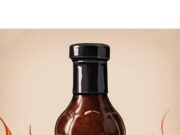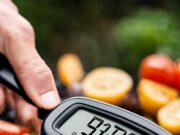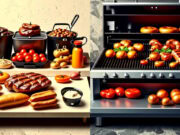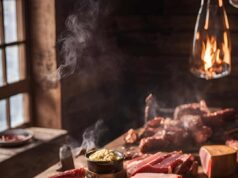Barbecues are a cherished tradition for many, but ensuring the safety of the food served is paramount.
Essential BBQ food safety practices include understanding safe cooking temperatures and employing the appropriate techniques for grilling. It is important to learn how to prevent foodborne illnesses and handle meat properly, ensuring that you enjoy delicious meals without compromise.
By following clear guidelines and tips, you can enjoy a safe and satisfying BBQ experience every time.
Key Takeaways:
- Always use a food thermometer to ensure meats reach safe internal temperatures, as listed on the Safe Minimum Internal Temperature Chart.
- Understand the difference between direct and indirect heat methods when cooking on the BBQ to prevent undercooked or overcooked meats.
- Properly store, handle, and reheat meats to prevent foodborne illnesses and ensure safe BBQ experiences.
Understanding Safe Cooking Temperatures
Understanding safe cooking temperatures is essential for effective food safety, particularly when grilling different types of meat during summer barbeques. Each type of meat has a specific safe minimum internal temperature that must be reached to effectively eliminate harmful bacteria.
For example, poultry should reach an internal temperature of at least 165°F, while ground meats require a minimum of 160°F. Utilizing a digital or instant-read thermometer is an effective way to ensure that your meats are thoroughly cooked, protecting against foodborne illnesses caused by bacteria such as E. coli and Campylobacter.
Safe Minimum Internal Temperature Chart
A safe minimum internal temperature chart is an essential resource for grill enthusiasts, providing clear guidelines on the appropriate cooking temperatures for various types of meat, including ground meats, poultry, steaks, and roasts.
This chart serves as a vital reference to ensure that every dish you serve is not only delicious but also safe for consumption. By following these recommended temperatures, you can significantly minimize the risk of foodborne illnesses that often arise from improper cooking practices.

For example, ground meats should reach an internal temperature of at least 160°F to effectively eliminate harmful bacteria, while poultry must achieve a minimum of 165°F. Understanding these temperature requirements is crucial, as it underscores the importance of food safety, allowing both home cooks and barbecue enthusiasts to enjoy their meals with confidence.
Key Cooking Techniques for Safe BBQ
Employing essential cooking techniques is crucial for maintaining food safety during barbecues. Methods such as direct heat and indirect heat play a significant role in determining the final quality and safety of grilled foods.
Direct heat is ideal for quick-cooking items like steaks, enabling a searing technique that enhances flavor while ensuring they are cooked properly. Conversely, indirect heat is better suited for larger cuts, such as roasts, where lower temperatures facilitate thorough cooking without charring the exterior.
Mastering these techniques will result in perfectly grilled meats while adhering to food safety standards.
Direct Heat vs Indirect Heat Methods
Understanding the difference between direct heat and indirect heat methods is essential for effective grilling and ensuring food safety during summer barbecues. These techniques directly influence cooking times and meat quality.
Utilizing direct heat involves placing meat directly over a heat source, making it ideal for thinner cuts like burgers and steaks. These cuts cook quickly and develop a beautifully charred surface. Conversely, indirect heat is more suitable for larger cuts, such as whole chickens or ribs, allowing for a longer cooking process that enhances tenderness and flavor.
Both methods are valuable tools in your grilling repertoire, contributing to perfectly cooked dishes while also minimizing the risk of foodborne illness—a crucial consideration when serving meat at gatherings.
Preventing Foodborne Illnesses
Preventing foodborne illnesses is a crucial aspect of BBQ food safety. It requires your careful attention to hygiene, as well as the proper handling and storage of perishable foods. By doing so, you can minimize the risks associated with harmful bacteria and microbes.
Common Foodborne Illnesses and Causes
Common foodborne illnesses, such as those caused by E. coli, Campylobacter, and Staphylococcus aureus, pose significant risks during BBQs, highlighting the necessity for stringent food safety measures.
These bacteria are well-known for causing serious gastrointestinal distress, with symptoms that can range from severe abdominal cramps and diarrhea to, in extreme cases, kidney failure. E. coli is often associated with undercooked beef, particularly ground meats, while Campylobacter can be found in contaminated poultry. Staphylococcus aureus is particularly concerning, as it can proliferate in unrefrigerated foods, leading to a swift onset of illness.
To mitigate these risks, it is essential to ensure thorough cooking; meats should reach safe internal temperatures, and hands should be washed regularly during food preparation.
Keeping perishable items chilled before cooking and using separate utensils for raw and cooked foods can significantly reduce the chances of cross-contamination, contributing to a safer and more enjoyable BBQ experience.
Proper Storage and Handling of Meat
Proper storage and handling of meat are essential to ensuring food safety and preventing foodborne illnesses. This is especially important when managing perishable foods in the refrigerator and freezer.
Refrigeration and Thawing Guidelines
Refrigeration and thawing guidelines are essential for ensuring meat safety, as they help prevent the proliferation of bacteria during storage and thawing processes, which is crucial in reducing the risk of foodborne illnesses.
It is important for you to understand the appropriate temperatures for storing different types of meat. Ideally, refrigeration should be set at or below 40°F (4°C). Ground meats and poultry require particular attention; they should be consumed or frozen within a day or two of purchase.
Regarding thawing, you should utilize safe methods, including:
- Refrigerating the meat
- Immersing it in cold water
- Using a microwave, provided you cook it immediately afterward
Avoid leaving meat at room temperature, as this can quickly accelerate bacterial growth, leading to increased health risks.
Reheating Leftovers Safely
Reheating leftovers safely is crucial to prevent foodborne illness, as improper reheating can allow harmful bacteria to survive and thrive.
To significantly reduce the risk of contamination, ensure that food is reheated to the appropriate internal temperature, typically around 165°F (74°C). Utilizing methods such as microwaving, baking, or stovetop heating can enhance the safety of the reheating process.
It is essential to follow proper storage practices; leftovers should be cooled quickly and stored in airtight containers to minimize exposure to air and moisture, both of which can promote bacterial growth.
For optimal freshness and safety, remember to consume refrigerated leftovers within three to four days.
Frequently Asked Questions
1. How do I know when my BBQ food is cooked to a safe temperature?
The best way to determine the proper cooking temperature for your BBQ food is by using a food thermometer. Insert the thermometer into the thickest part of the food item, making sure it does not touch any bones, to get an accurate reading.
2. What is the recommended internal temperature for different types of BBQ meats?
The recommended internal temperature for BBQ meats varies depending on the type of meat. For example, chicken and turkey should reach an internal temperature of 165°F, while beef and pork should reach 145°F. Refer to a food safety chart for specific temperatures for different types of meats.
3. Can I rely on the color of my BBQ food to indicate if it’s cooked?
No, the color of BBQ food is not a reliable indicator of its doneness. Some meats, like pork, may turn pink even when fully cooked, while others, like ground beef, may appear brown even when undercooked. Always use a food thermometer to ensure your food is cooked to a safe temperature.
4. How can I prevent cross-contamination while cooking BBQ food?
To prevent cross-contamination, make sure to use separate utensils and cutting boards for raw and cooked meats. Wash your hands frequently and thoroughly after handling raw meat. Also, make sure to keep raw meats stored away from other foods in the fridge.
5. Is it safe to partially cook BBQ food and finish it later?
It is not recommended to partially cook BBQ food and finish cooking it later. Partially cooked food can harbor harmful bacteria, and finishing it later may not fully eliminate these bacteria, increasing the risk of foodborne illness. It’s best to cook food to its recommended internal temperature in one sitting.
6. What is the proper way to store leftover BBQ food?
To store leftover BBQ food safely, make sure to let it cool down before placing it in an airtight container and storing it in the fridge. Leftovers should be consumed within 3-4 days or frozen for longer storage. When reheating, make sure to heat the food to at least 165°F to kill any bacteria that may have grown during storage.




















































